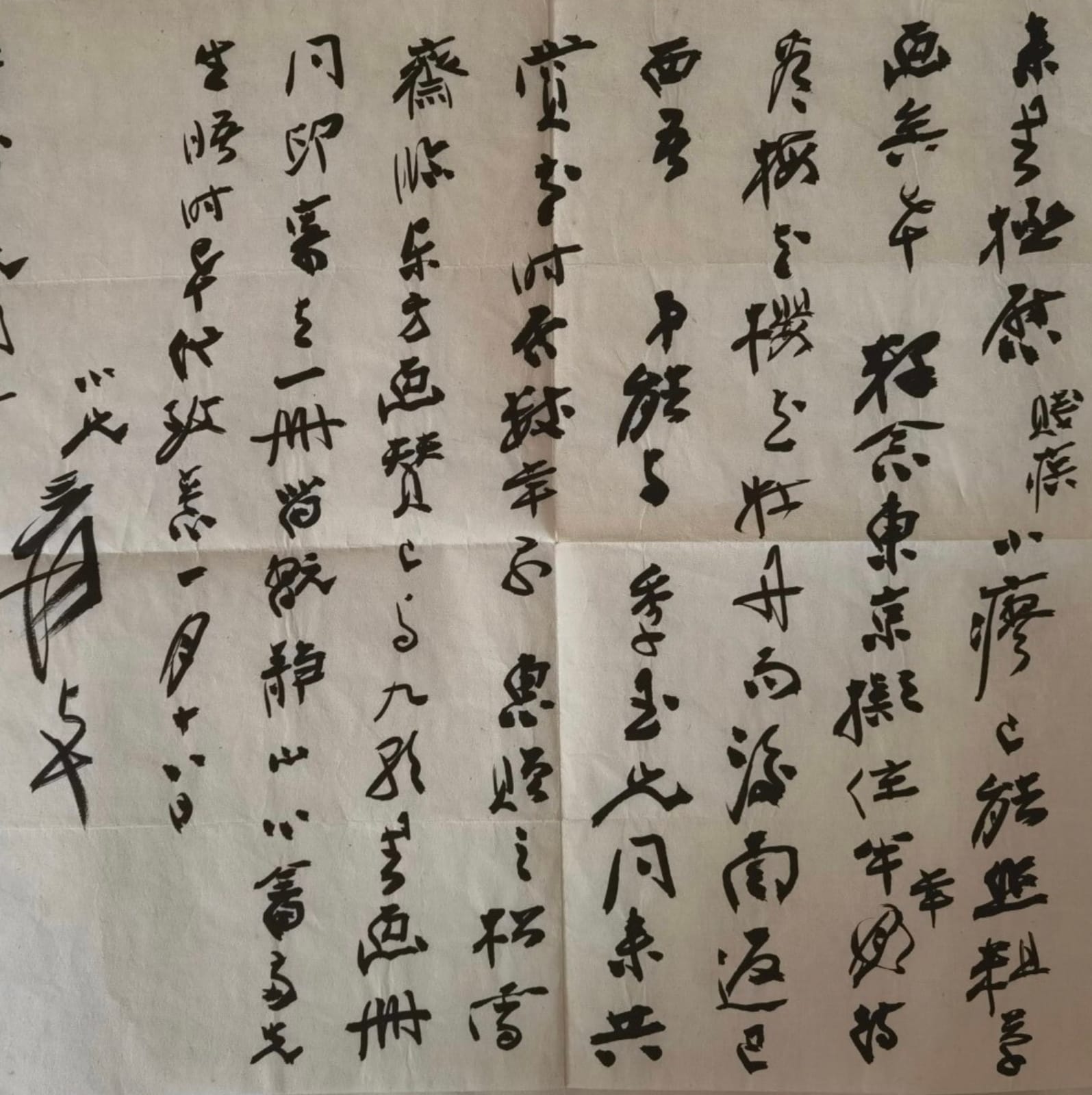-
Artworks

Zhang Daqian 張大千 1899-1983
Letter of Invitation to view the Blossomsink on paper 水墨纸本13 x 13 1/4 in
33 x 33.7 cmCopyright The ArtistThis letter was written as Zhang Daqian was recovering from illness, and its tone is notably light and cheerful, in sharp contrast to the weightier mood of works produced during...This letter was written as Zhang Daqian was recovering from illness, and its tone is notably light and cheerful, in sharp contrast to the weightier mood of works produced during his sickness. In the text, Zhang mentions his plan to reside in Tokyo for half a year, awaiting the blossoms of plum, cherry, and peony, and warmly invites his friends to join him in enjoying the spring scenery. Such content conveys not only anticipation of nature’s renewal but also the joy and optimism of restored health.
In calligraphic form, the letter reveals the same buoyancy. The brush moves with ease and fluency, the ink appears bright and unburdened, free from the heaviness of his earlier, illness-stricken hand. The rhythm and turning of strokes flow naturally, reflecting his physical recovery and lifted spirit. This is precisely the power of letters within the tradition of Shufa: not composed for display, they require no embellishment, and thus transmit most directly the writer’s bodily cadence and state of mind.
For today’s readers, the letter offers more than its words. Its atmosphere of happiness can still be felt through the breathing of the brush, where pressure, pace, and movement reveal emotions too subtle for language alone. It stands as a vivid example of the old saying “to see the writing is to see the person,” showing how the private letter is among the most genuine and moving forms of Chinese calligraphy.
這封信寫於張大千身體逐漸康復之時,全文語氣輕快愉悅,與他病中作品的沉重氣息形成鮮明對比。信中,大千提及自己將在東京暫住半年,靜待梅花、櫻花與牡丹次第綻放,並邀請友人同來共賞春色。這樣的內容,不僅流露出對自然景物的憧憬,更蘊含著康復後對生活的喜悅與積極。
在書寫上,此札筆勢舒展流暢,墨色清暢明快,無病中沉重壓抑的痕跡。行筆間的律動與轉折,似乎隨心而下,映照出書者當時的身心狀態。這正是書信作為書法最真實的一面:它不是為公開展示而作,不需矯飾修飾,而是將作者的身體節奏、心境轉瞬之感直接傳達於筆端。
今日讀之,我們不僅能理解文字所述之情,更能透過筆墨的呼吸與節奏感受到大千康復後的愉悅氛圍。這種情緒的傳達並非單純依賴語意,而是通過毛筆的輕重、快慢、轉折而呈現。信札由此成為「見字如面」的最佳詮釋,不僅記錄了交流與日常,更記錄了心境的流動,展現出書法作為生命痕跡與藝術形態的獨特魅力。
-
Inscription:
Translation: Your letter brought me great comfort. My humble illness has somewhat improved, and I am already able to sit and make rough sketches with the brush—pray set aside your concern. I intend to reside in Tokyo for half a year, awaiting the blossoms of plum, cherry, and peony, and thereafter return southward to Brazil. Might you and Brother Jiyu be able to come together, that we may share in the viewing of flowers?
Some years ago you kindly presented me with Songxuezhai’s (Zhao Mengfu, 1254-1322) Copy of Dongfang’s Painting Eulogy. This work has now been printed together with the Nine Songs album of painting and shufa. I am sending you one copy for your enjoyment. When you next meet with the two gentlemen Jingshan (Lang Jingshan, 1892-1995) and Xinyu (Pu Ru, 1896-1963), I beg you kindly to convey my respects.
The eighteenth day of the first lunar month.Your younger brother, Yuan, with humble obeisance.
來書極慰。賤疾小瘳,已能坐粗筆畫矣,希釋念。東京擬住半年,待看梅花、櫻花、牡丹,而後南返巴西。吾弟能否與季玉兄同來共賞花時否?數年前惠贈之松雪齋《臨東方畫贊》已與《九歌》書畫冊同印,寄去一冊留翫。靜山、心畬兩先生晤時希代致意。一月十八日。小兄爰頓首。
Join our mailing list
* denotes required fields
We will process the personal data you have supplied to communicate with you in accordance with our Privacy Policy. You can unsubscribe or change your preferences at any time by clicking the link in our emails.

